
 Data Structure
Data Structure Networking
Networking RDBMS
RDBMS Operating System
Operating System Java
Java MS Excel
MS Excel iOS
iOS HTML
HTML CSS
CSS Android
Android Python
Python C Programming
C Programming C++
C++ C#
C# MongoDB
MongoDB MySQL
MySQL Javascript
Javascript PHP
PHP
- Selected Reading
- UPSC IAS Exams Notes
- Developer's Best Practices
- Questions and Answers
- Effective Resume Writing
- HR Interview Questions
- Computer Glossary
- Who is Who
How To Activate and Use YouTube ‘Stats for Nerds’ Feature
Despite its name, YouTube's "Stats for Nerds" feature is not just for nerds. It provides very technical information on specific videos. YouTube's 'Stats for Nerds' feature, despite its name, is not just for nerds. It is disabled by default in all YouTube videos, but when activated, a little window appears over the video displaying buffering data, video quality, and other information. This function is built into YouTube.
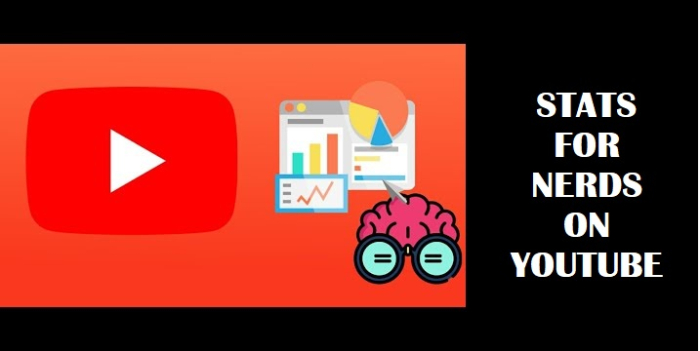
What is ?Stats For Nerds'?
The stats for nerds show the data about the following specifications. Some of the specifications are different on YouTube App. It also shows the device name, readahead, and dropped frames. The detailed explanation of each is as follows. 1. How To Activate and Use YouTube ?Stats for Nerds' Feature
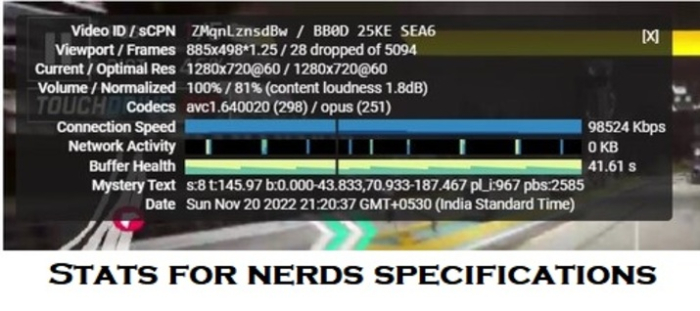
Video ID / sCPN:
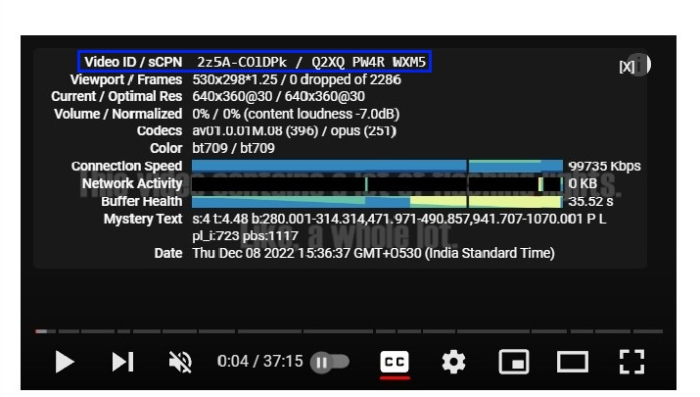
The first portion of this field Video ID is self-explanatory. This alphanumeric ID number connects to the video and can be used to access it through YouTube's API. The second part of the field sCPN is a unique string that developers can use to identify your specific viewing of the video.
It can help with debugging problems, as developers can determine what factors might have contributed to the problems experienced.
Viewport / Frames
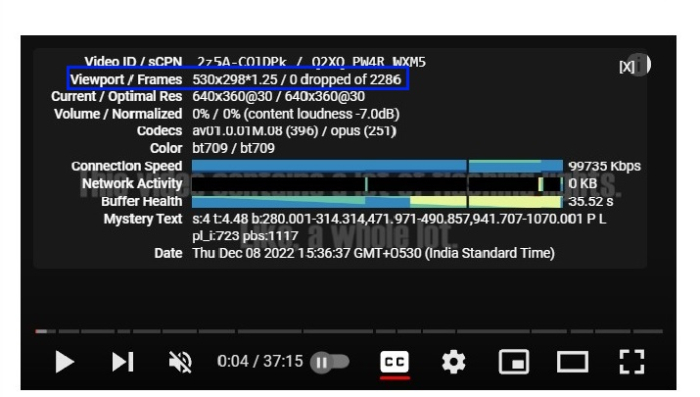
The resolution of the video player (not the video's resolution) and the current frame you are watching. Unlike video resolution, the viewport resolution is the actual resolution you are viewing rather than the video's resolution.
For example, a standard YouTube video in theatre mode on a 1080p screen will be 1280Ã720 or 720p. This is a resolution that YouTube will pre-process, meaning the video will play without any issues. However, if a window is resized to smaller, the viewport may shrink, forcing the browser to scale the video to suit.
Current / Optimal Res
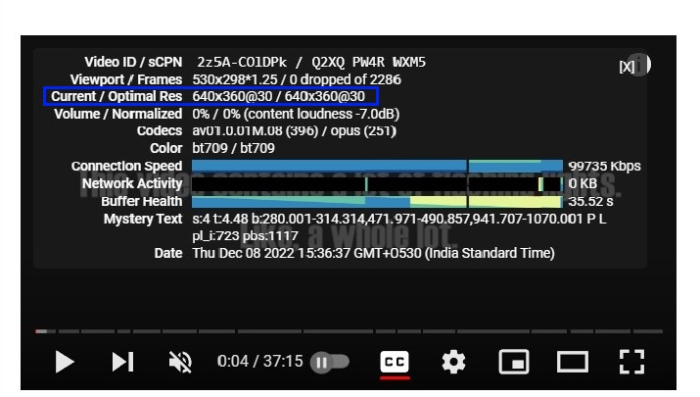
The video's current resolution versus its original resolution. This determines the current resolution at which the video is being played. Your device's maximum resolution, connection speed, and other factors may cause the current resolution to change.
Volume / Normalized
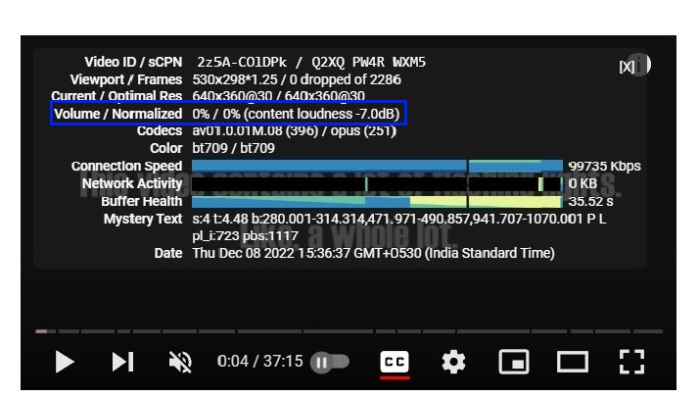
The first part of that statistic is straightforward. The volume shows you the current position of the volume slider in percent, with 0% being on the far left, and 100% on the far right.
Normalize means Normalize the sound, and this is how YouTube keeps your ears safe from abrupt changes in the volume of videos. Think of it like adjusting. If your volume is normalized at 80 percent, turning your volume down by half would cause your effective volume to be 40 percent instead of 50 percent.
Codecs
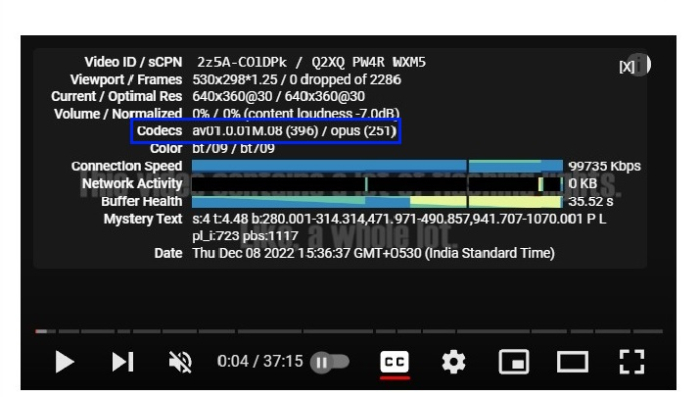
Media Video and Audio Compression Codecs. The Codecs field shows you the codecs used for compressing your videos and audio. This is different from a file name, which is nothing but a container. Different codecs compress sound and video differently, and you need to have the proper codecs installed on your device to play videos using them.
Color
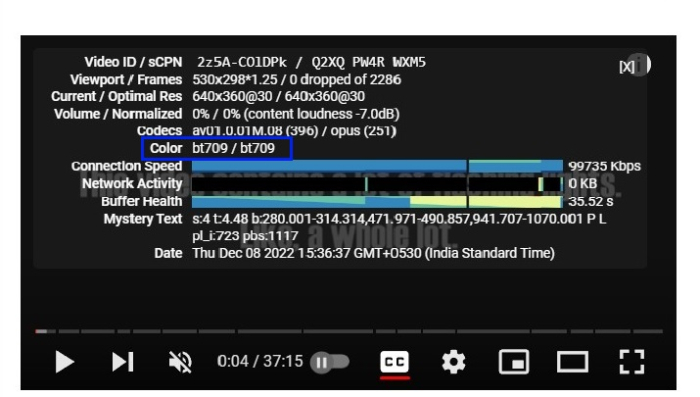
This shows you the current range of colors for the content you are viewing. This information may help confirm that your Xbox Series X|S or Xbox One console can eventually play HDR videos on YouTube.
Connection Speed
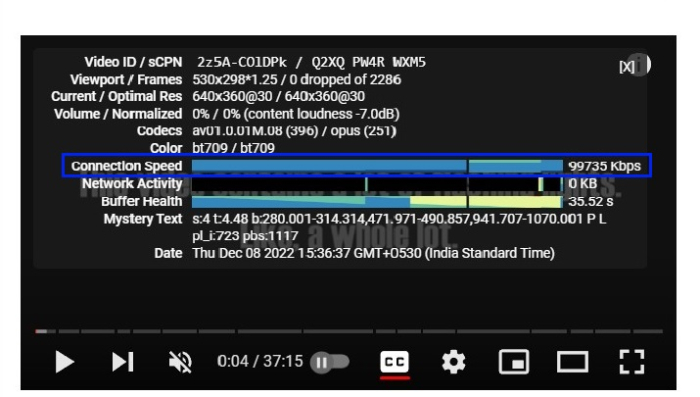
Your device's connection to the internet. The connection speed, you may have guessed, is how fast your device is connecting to the YouTube servers. This is determined thanks to YouTube knowing the size of the data being transmitted, and it can determine your connection speed by timing the amount of time that data takes to arrive. The data is transmitted from YouTubes servers to your device.
Network Activity
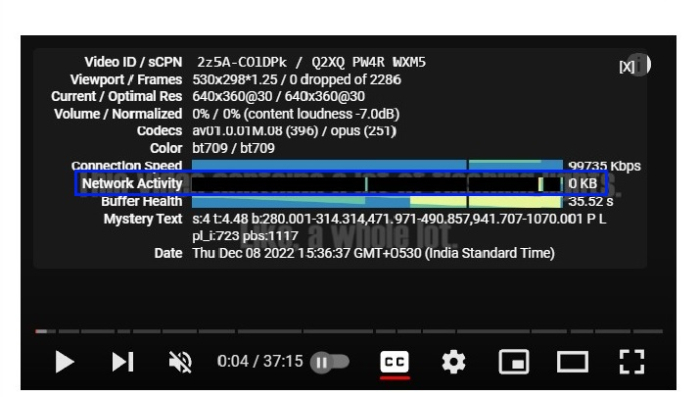
The higher your video resolution, the higher the activity on your network - known as bandwidth - will be. The Network Activity field represents actual data being transmitted.
You should see the number go down to zero when the video is stopped and will increase in proportion to video quality. Internet connection speeds fluctuate, that is the inevitable reality of technology. This fluctuation is generally minor, but would be sufficient to cause problems if you played videos straight o received data.
Buffer Health
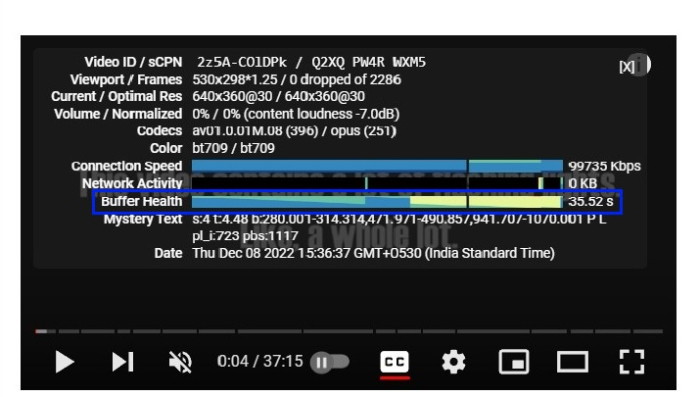
Internet connection speeds alter, it is a fines capable reality of the technology. This fluctuation is usually minimal and unnoticeable, but it would be enough to cause problems if you were playing video directly from the data being received.
Buffers help to prevent stuttering by loading slightly in advance and allow you to play the video from a buffer instead of a direct connection. This means that should there be any fluctuations in connection speeds causing a data flow to dip a bit, the video can continue playing without any problems, and the buffer can pick up again when speeds vary again. Generally, the lower your buffering health, the greater the chance that you will see a stuttering video.
Mystery Text
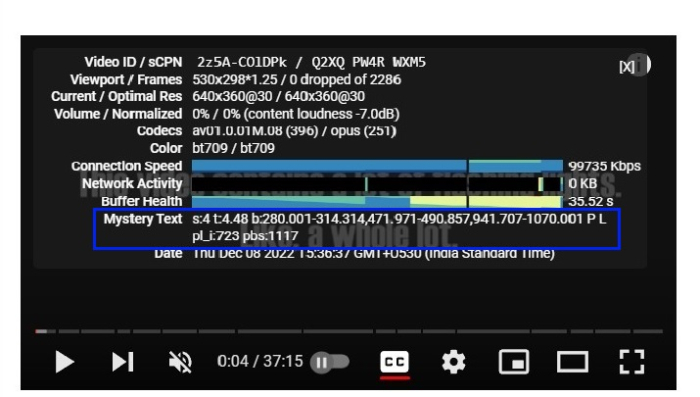
No one knows for certain what this data signifies, but plenty of people have tried to crack the code. There has been no official proclamation about the mysterious text; however, some quite clever guesses have been made.
Date
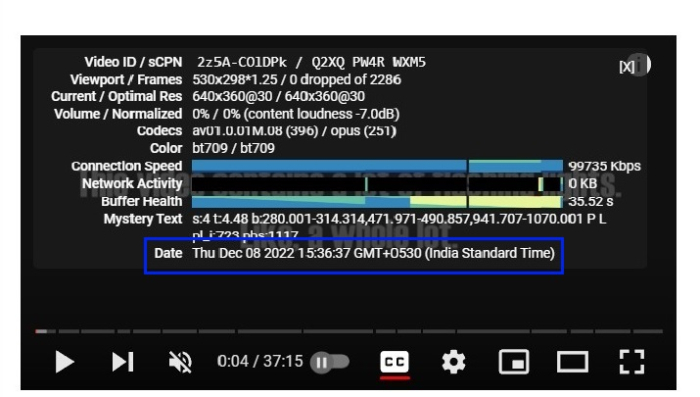
Date and time when the videos are being viewed along with time zone.
How to Turn on YouTube's Stats for Nerds?
Stats for Nerds is useful, but finding and turning it on will differ slightly based on the device you are using.
On Desktop
Open Youtube.com in your browser.
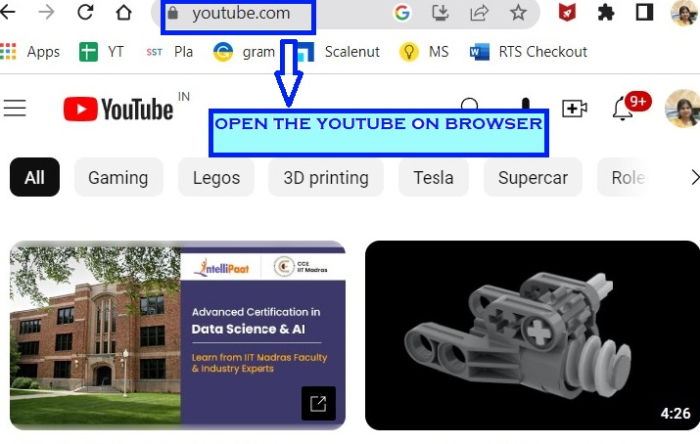
Select and play the video.
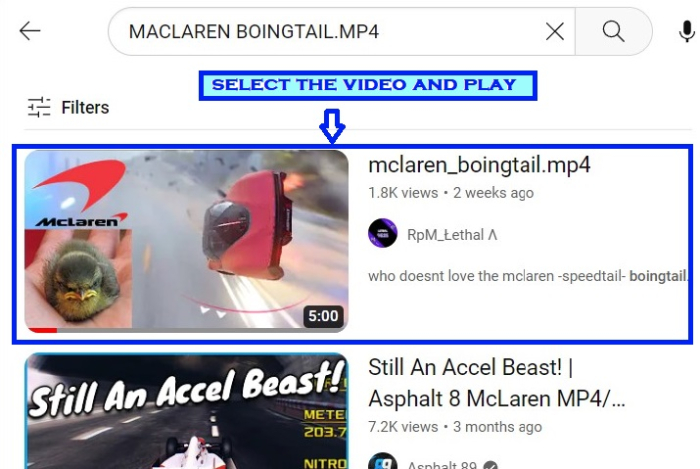
Video has started playing, right-click the video to open the video menu.

Select the ?Stats for Nerds' option.
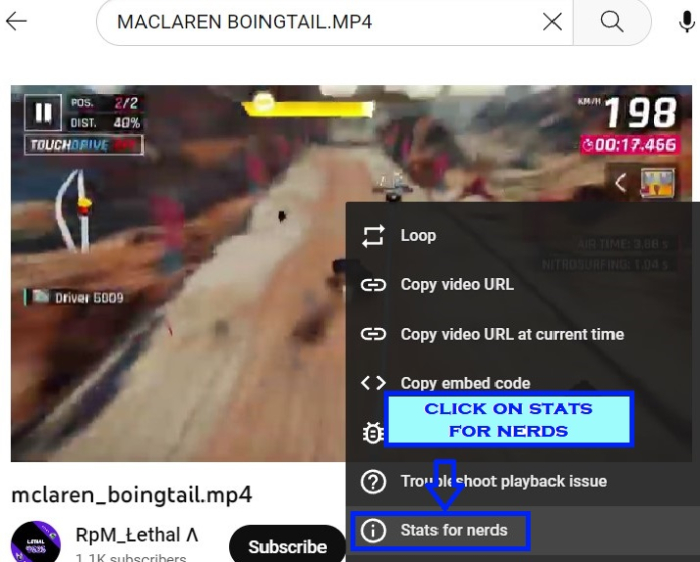
Stats for nerds has opened on the video screen.
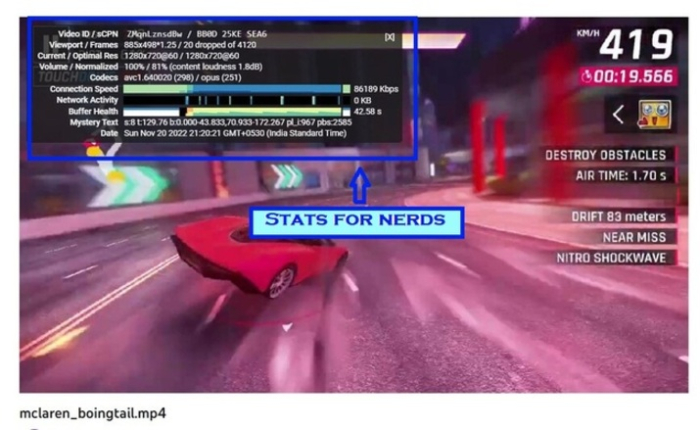
And, when you are done analyzing the data, you can close the Stats for Nerds window by hitting the little [x] in the top right-hand corner of the Stats for Nerds window.
YouTube App
Steps to Enable Stats for Nerds in the App
Open the YouTube app and click on your profile picture.

Open settings
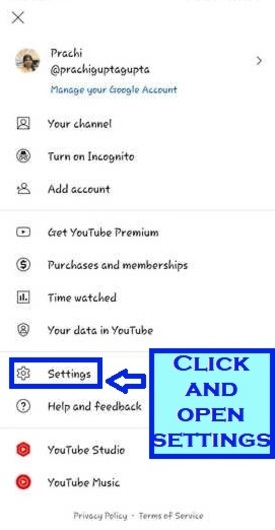
Open general
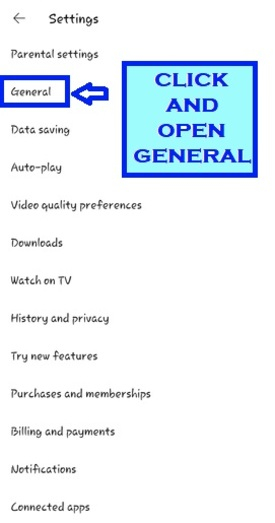
Scroll to the last option you will see the option. It is disabled.
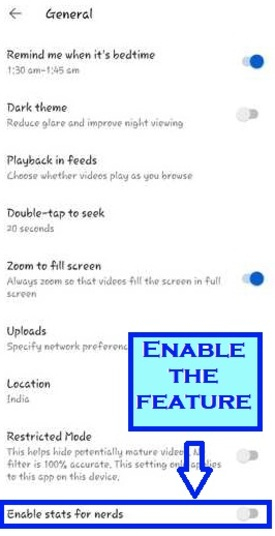
Enable the feature.
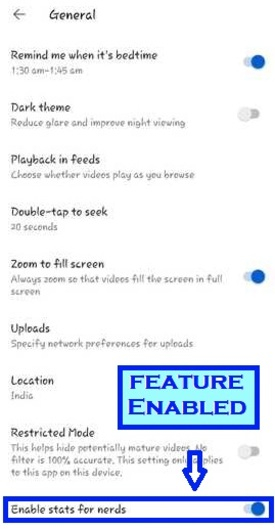
Steps to View Stats for Nerds on Video.
Open YouTube.

Select and play a video.

Click on the settings icon.
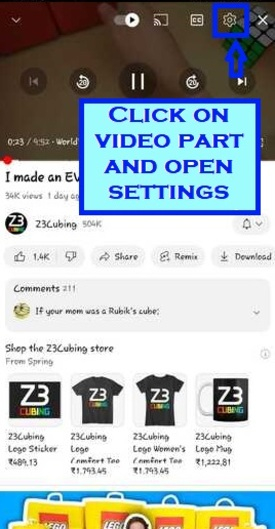
Tap the "Stats" button.
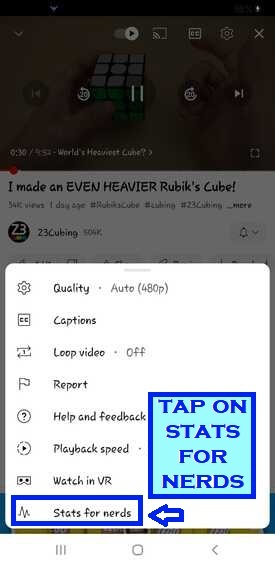
The stats for nerds are shown on video.
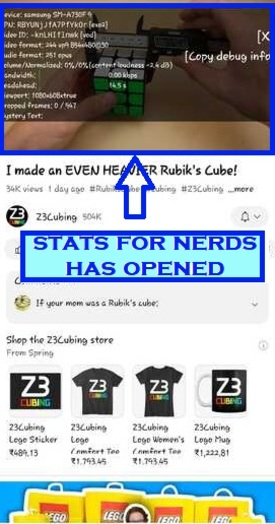
And, when you are done analyzing the data, you can close the Stats for Nerds window by hitting the little [x] in the top right-hand corner of the Stats for Nerds window.
Conclusion
Some of that information is clever, but much of it is going to seem like tech-y nonsense to the casual user. The primary purpose of the stats for nerds, though, is to help YouTube engineers fix bugs. If you are ever experiencing problems on YouTube, such as app crashes, slow buffering on videos, or any other issues, take a screenshot of Stats for Nerds and submit it with your bug report to YouTube Support. YouTubes Stats for Nerds helps in debugging issues.

